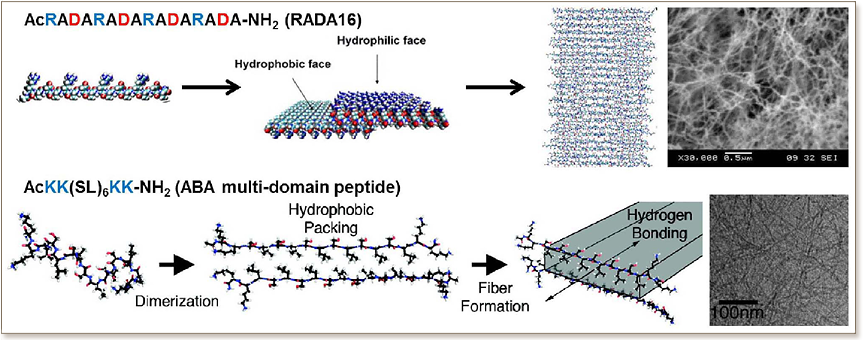

Three-dimensional (3D) bioprinting is a disruptive technology for creating organotypic constructs for high-throughput screening and regenerative medicine. One major challenge is the lack of suitable bioinks. Short synthetic self-assembling peptides are ideal candidates. Several classes of peptides self-assemble into nanofibrous hydrogels resembling the native extracellular matrix. This is a conducive microenvironment for maintaining cell survival and physiological function. Many peptides also demonstrate stimuli-responsive gelation and tuneable mechanical properties, which facilitates extrusion before dispensing and maintains the shape fidelity of the printed construct in aqueous media. The inherent biocompatibility and biodegradability bodes well for in vivo applications as implantable tissues and drug delivery matrices, while their short length and ease of functionalization facilitates synthesis and customization. By applying self-assembling peptide inks to bioprinting, the dynamic complexity of biological tissue can be recreated, thereby advancing current biomedical applications of peptide hydrogel scaffolds.
DOI: 10.1088/1748-6041/11/1/014103

"KAUST shall be a beacon for peace, hope and reconciliation, and shall serve the people of the Kingdom and the world."
King Abdullah bin Abdulaziz Al Saud, 1924 – 2015
Thuwal 23955-6900, Kingdom of Saudi Arabia
Al-Haytham Building (Bldg. 2)
© King Abdullah University of Science and Technology. All rights reserved